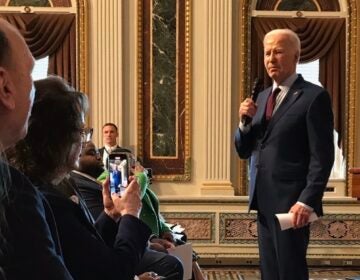Winterthur to change the climate of its Delaware collection and hopefully the way items are preserved
There are 173 rooms at Delaware’s Winterthur museum. It’s Lois Price’s job to observe the 9 climate monitors. Every day that is a little sunnier or a little more humid, those rooms are at risk.
Price, who is the head of Conservation Projects at Winterthur, was one the people excited to hear that the National Endowment for the Arts has awarded $350,000 to change the way those items are preserved. A 2-year project will begin in October to create micro-climates for each room. Those micro-climates will allow each room to change to the conditions necessary for preservation and in the end will save money too. It’s a device that is no bigger than a thermostat, and it can be remote controlled.
Wintethur Director, Dr. David Roselle, said the collections there are unique. “We have to be careful about humidity, heat, cooling, sunlight, and lots of other things to be good stewards of the collection.”
The NEH thinks so too. Dr. Nadina Gardner, Director for the Division of Preservation and Access for NEH agrees. “What could be more sensible than using preservation methods that will extend the life of a precious cultural heritage while lowering costs and greenhouse emissions.”
Delaware’s Congressional delegation was on hand for the announcement. Senator Tom Carper (D-Delaware) said this will award will keep Winterthur as a first class operation. He added that when a National park comes to Delaware in the next year, the additional number of tourists will also come to Winterthur.
Senator Chris Coons (D-Delaware) called a conservation project like this something that he has followed all through his career. He said he also “knows a thing or two about priceless artifacts.” He joked that he once broke “the ears” off his grandmother’s priceless 16th century Dutch pitcher, and while this project won’t bring that back, it will change the way items are preserved.
“Winterthur is saving hundreds of thousands of dollars in their operating costs, updates their operating systems and then gets to teach out it to the rest of the world,” said Coons.
Gardner and Roselle said a system will be set up to show how the micro-environment system is working. Roselle said the sensors will detect climate change and make adjustments in real time. That documentation will be available for other museums around the world to view so they might see how it fits into their institution.
Carper, Coons, and Congressman John Carney (D-Delaware) praised the NEH as a way that federal money should be spent.
In addition to the Winterthur grant the NEH awarded $39m in projects across the country. In addition to Wintethur there were several other Philadelphia institutions, such as, the Philadelphia Art Museum, and the Library Company of Philadelphia that received money.
WHYY is your source for fact-based, in-depth journalism and information. As a nonprofit organization, we rely on financial support from readers like you. Please give today.




